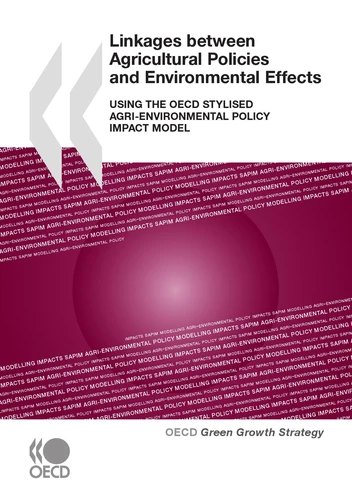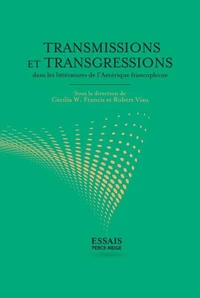Linkages between Agricultural Policies and Environmental Effects. Using the OECD Stylised Agri - environmental Policy Impact Model
Par :Formats :
Disponible dans votre compte client Decitre ou Furet du Nord dès validation de votre commande. Le format Multi-format est :
- Pour les liseuses autres que Vivlio, vous devez utiliser le logiciel Adobe Digital Edition. Non compatible avec la lecture sur les liseuses Kindle, Remarkable et Sony
 , qui est-ce ?
, qui est-ce ?Notre partenaire de plateforme de lecture numérique où vous retrouverez l'ensemble de vos ebooks gratuitement
Pour en savoir plus sur nos ebooks, consultez notre aide en ligne ici
- Nombre de pages172
- FormatMulti-format
- ISBN978-92-64-09570-0
- EAN9789264095700
- Date de parution16/11/2010
- Protection num.NC
- Infos supplémentairesMulti-format incluant PDF avec W...
- ÉditeurOECD
Résumé
Improving the environmental performance of agriculture is a high priority for OECD countries. But measuring and evaluatingthe impact of agri-environmental policies on the environment can be challenging, as it requires linking economic and biophysical models in country-specific contexts.
The OECD has developed the Stylised Agri-environmental Policy Impact Model (SAPIM), which can be adapted and applied by researchers and policy makers to better understand the impact of policies on the agri-environment conditions in their countries.
This report applies the model to representative farms in Finland, Japan, Switzerland and the United States.
These countries include a wide range of objectives, policy measures and agri-environmental conditions. The results highlight that when positive or negative environmental externalities are not taken into account by farmers then the production choices by farmers will reflect private costs and benefits. Policies can potentially raise social welfare by taking account of those externalities. This report notes that, overall, the diversity of conditions across sectors and countries makes it difficult to generalise the impact of agri-environmental policies beyond the situations that are modeled.
Nevertheless, some wider policy messages emerge. Drawing on the four case studies examined, this report recommends that; polluting activites that are not regulated should be included in policy design; the existing overall policy environment needs to be taken into account in evaluating agri-environmental policies; and environmental co-benefits and trade-offs need to be recognised. Green growth policies can stimulate economic growth while preventing environmental degradation, biodiversity loss and unsustainable natural resource use.
The results from this publication contribute to the Green Growth Strategy being developed by the OECD as a practical policy package for governments to harness the potential of greener growth.
These countries include a wide range of objectives, policy measures and agri-environmental conditions. The results highlight that when positive or negative environmental externalities are not taken into account by farmers then the production choices by farmers will reflect private costs and benefits. Policies can potentially raise social welfare by taking account of those externalities. This report notes that, overall, the diversity of conditions across sectors and countries makes it difficult to generalise the impact of agri-environmental policies beyond the situations that are modeled.
Nevertheless, some wider policy messages emerge. Drawing on the four case studies examined, this report recommends that; polluting activites that are not regulated should be included in policy design; the existing overall policy environment needs to be taken into account in evaluating agri-environmental policies; and environmental co-benefits and trade-offs need to be recognised. Green growth policies can stimulate economic growth while preventing environmental degradation, biodiversity loss and unsustainable natural resource use.
The results from this publication contribute to the Green Growth Strategy being developed by the OECD as a practical policy package for governments to harness the potential of greener growth.
Improving the environmental performance of agriculture is a high priority for OECD countries. But measuring and evaluatingthe impact of agri-environmental policies on the environment can be challenging, as it requires linking economic and biophysical models in country-specific contexts.
The OECD has developed the Stylised Agri-environmental Policy Impact Model (SAPIM), which can be adapted and applied by researchers and policy makers to better understand the impact of policies on the agri-environment conditions in their countries.
This report applies the model to representative farms in Finland, Japan, Switzerland and the United States.
These countries include a wide range of objectives, policy measures and agri-environmental conditions. The results highlight that when positive or negative environmental externalities are not taken into account by farmers then the production choices by farmers will reflect private costs and benefits. Policies can potentially raise social welfare by taking account of those externalities. This report notes that, overall, the diversity of conditions across sectors and countries makes it difficult to generalise the impact of agri-environmental policies beyond the situations that are modeled.
Nevertheless, some wider policy messages emerge. Drawing on the four case studies examined, this report recommends that; polluting activites that are not regulated should be included in policy design; the existing overall policy environment needs to be taken into account in evaluating agri-environmental policies; and environmental co-benefits and trade-offs need to be recognised. Green growth policies can stimulate economic growth while preventing environmental degradation, biodiversity loss and unsustainable natural resource use.
The results from this publication contribute to the Green Growth Strategy being developed by the OECD as a practical policy package for governments to harness the potential of greener growth.
These countries include a wide range of objectives, policy measures and agri-environmental conditions. The results highlight that when positive or negative environmental externalities are not taken into account by farmers then the production choices by farmers will reflect private costs and benefits. Policies can potentially raise social welfare by taking account of those externalities. This report notes that, overall, the diversity of conditions across sectors and countries makes it difficult to generalise the impact of agri-environmental policies beyond the situations that are modeled.
Nevertheless, some wider policy messages emerge. Drawing on the four case studies examined, this report recommends that; polluting activites that are not regulated should be included in policy design; the existing overall policy environment needs to be taken into account in evaluating agri-environmental policies; and environmental co-benefits and trade-offs need to be recognised. Green growth policies can stimulate economic growth while preventing environmental degradation, biodiversity loss and unsustainable natural resource use.
The results from this publication contribute to the Green Growth Strategy being developed by the OECD as a practical policy package for governments to harness the potential of greener growth.


















